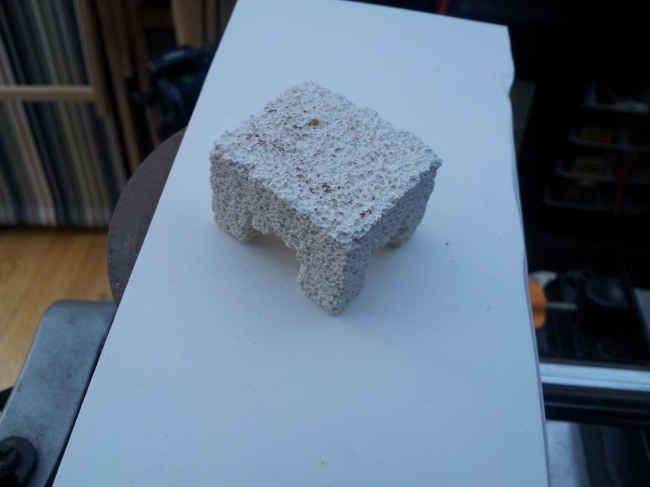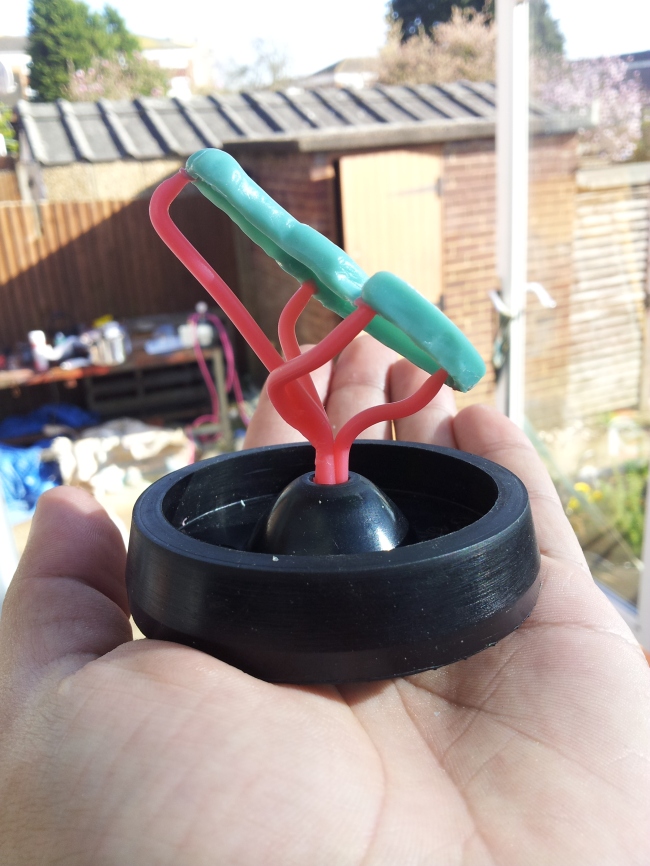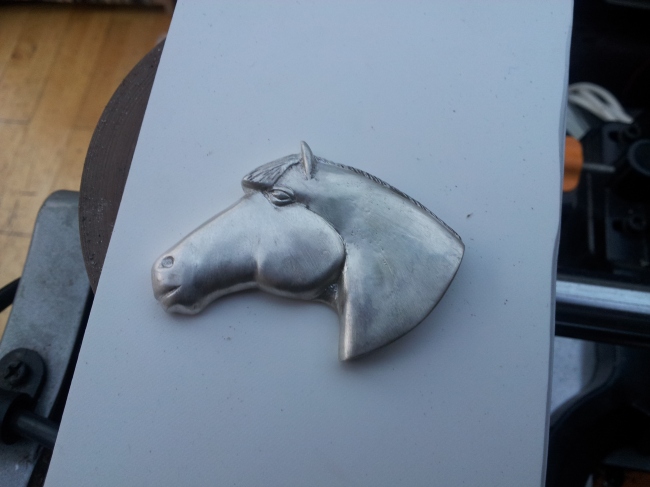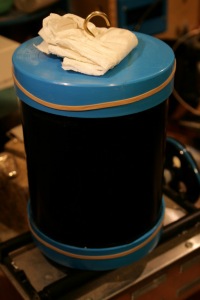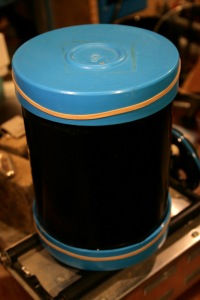Most of the last few months has been occupied with sorting out my new house and work spaces as well as picking up a few new skills. This process is still ongoing and most of it is for another post but it has occurred to me while gathering the things I want for my studio/workshop that I have a strategy for buying the tools I need. So what I would like to consider here is tools, specifically obtaining them.
Tools are needed by almost anyone who makes things. Human fingers, although amazingly multifunctional, are really the jack of all trades and the master of none and so to do almost anything really really well we need tools of one form or another.
I am mainly considering power tools here as they are generally more expensive and therefore more thought goes into their purchase but the same philosophy can be applied to hand tools too and to other things in general.
Unless you are fortunate enough to find them or find someone who will give you them, you are going to have to buy them or make them and this provides you with, as I see it, broadly four options.
1. Buy new, good quality
2. Buy new, dubious quality and improve
3. Buy second hand
4. Make
If you are running a successful business with staff that are fully utilised and more potential work than you can fulfil, then number 1 is what you should do. All the time taken up by the other 3 options will end up costing you more than you save.
If, like me, you are doing this for yourself to learn and for the fun of it, it’s not so clear cut. So here is my decision process.
If I can make it and what I end up with will be as good or better than I can obtain elsewhere, that’s always my first option. I’ll learn a lot about the tool and about what features it needs and have the ability to produce something that does the jobs I need it to do. Most things these days fall into either the category of low volume/high price or high volume/low price where, once one sets profit as side, in the former you are paying for someone’s time to make it and the latter is pretty much all material costs. Things in the first category also tend to be less available on the second hand market so buying there is often not an option. Also since the price is high because of their small market, buying materials to make one can easily cost a fraction of the finished unit so if you are willing to trade your time building for a saving, you can do quite well. I wanted a potters wheel and the cost of buying one was prohibitive, even used. They are not that complex so building one seemed like the best option and, so far, it seems to work well. (I’ll write a post about designing and building that at a later date) Things in the second category can be the opposite and economies of scale can lead to the strange situation where the material cost would be higher than an off the shelf unit. Fortunately their ubiquity makes second hand a viable option. Imports tend to also fall into the low value/high quantity bracket and I’ll deal with them later on.
For more common things the second hand market can be a great boon to the small time workshop owner. Ebay is usually where I start my search for most things I buy on-line. Many popular industrial machines are available used at a fair price, especially things that are bigger and heavier than a your average Amazon box because people know it won’t fit in a letterbox but rarely realise they are still postable: ‘collection only’ can be great. I have had some amazing deals on things that people didn’t want to post but were just round the corner or they know what they had. Both my horizontal and standard band-saw, kiln and many other things have come to me this way. Generally whatever you buy will need a bit of work but it’s nowhere near as much as building something from scratch. Ebay is also of course a good place to buy cheap imported things straight from where they come from, although other sites are arguably better.
Some things are not available second hand at a sensible price. I also wanted a spindle moulder and that is a different matter all together. All the old ones are expensive and snapped up by carpenters and woodworking firms or were too far away. The speed of the spindle makes them quite dangerous things if they decide to go wrong and building one would require quite a bit of effort to try to minimise the error in the trials. This led me to option 2. Buy a Chinese import.
Some Chinese imports are better than others. They are generally designed to be “good enough” (from both the point of use and manufacturing ease) so for occasional use they are fine. They tend to provide the minimum you need to do the job and they can be quite Victorian in their use of large bits of cast iron. This means that they are ripe for the modifying. The solid castings give good rigidity (although occasionally are a bit thin) the folded steel of cabinets is easy to weld to and their general simplicity makes replacing components with ones of your own design quite straightforward. Also they are generally knock offs of successful models so they have actually been tried and tested more than you might think. The quality of finish can be anything from very good to dire. There are companies who do good business importing Chinese machinery and then finishing it and selling it, occasionally, as their own. When buying from this pool of imports it is important to realise that the same product will be offered at a number of different price points buy different suppliers. For some of them you are buying the name, others the backup of a company that cares about it customers and many, I’m sure, that are just trying to fleece you. Other companies will have the same item on eBay at say £100, £350, and £10000 with the idea that you will think that the top price is someone trying to screw you over, the bottom one is a knock off or fly by night company and the middle one must be the right price. This is goldilocks pricing. Unless you can actually see and poke the thing you are about to buy it can be a bit of a gamble. For some things the core will be well done but the ancillary bits are where they have cut corners, others will be poor throughout and some are amazingly well made. Much like second hand, I always expect to have to do something to make a cheap import good. It should also be noted that various companies import items as part of their product range and have them branded with their logo and colours but they insist on slightly higher than normal standards from the manufacturers and also tend to go straight to the factory and cut out the middle man so are usually the best kind of company to go to if you want an import. There is also the question of expected use. A tool that I expect to use for one job does not warrant the cost of buying a big name high quality item. This means I do buy things from low end hobby market companies when I know I only have limited use for it. Maybe I’ll find more things to use it for but if that happens and it looks like it’s worth an upgrade, then I haven’t lost a lot of money.
If it’s something I think I am going to use A LOT like a cordless drill, then I buy good quality and new. Yes you could buy 4 cheapo ones for the price of a good one but as I buy about one a decade would a cheap one last for 2 and bit years and could one get new batteries for it 8 years into its life? Also will it have the power and the ability to be used to its limits regularly? The other time I go for brand names is if they aren’t that much more than the cheep imports. Sometimes they have had to compete so much that their price point is quite competitive. Interestingly a moderate size company making a good product might have to sell a product with a thin margin to get any sales where as a foreign, low cost item might be sold with a large mark-up so there is no real reason to buy the lower grade product. If looking at these imports it’s always good to see it in real life first if possible, if not finding some reviews can be good too. A word of warning though; almost all companies make duff products and nearly every large brand has done “badge manufacturing” where you buy a product, put it in your own colours and slap your logo on it and sell it as yours own, as I mentioned before some companies even do this almost exclusively. Also brands are bought and sold and the good will of a brand name can be used to sell poor quality at a high mark-up. This means that if you buy from a reputable name it does not follow that you always get a good product. Always do some research.
Still you might ask why you would ever want to buy anything but the best. Go onto any web forum on any subject that involves buying tools and you will find people being slated for even suggesting anything but American, British, German….(or other developed country for that matter.) have any value at all. There is the professional snobbery of “oh that’s just a hobby machine”, or “no tradesman would use that”. But I feel there are two very good and one quite good reason to buy substandard and do it up yourself. Firstly cost, not only will the average Joe not have thousands to spend and if you are still learning, you will make mistakes and just occasionally one could damage or catastrophically destroy a machine and better doing that and wrecking a cheap machine than an expensive one. Sure once you are happy you know exactly what you are doing and you are doing it regularly enough with enough income to buy something better, go for it and buy a shiny new thing with bells and whistles.
Secondly learning on something basic will also teach you much much more. A tool that does everything for you is nice but you don’t learn nearly as much. Without failure there is no learning and pushing a simple tool to its limits will tell you much more about how it works and how the process and the material interact. In the long term it will also inform you as to which bells are worth paying for.
The third reason is that the act of modifying, improving, repairing and and fiddling will result in a tool that does what you want. Most tools are made to do a bit of everything well. Go to any factory and you will find they have customised tools to do what they want a little bit better. You are never going to use any tool to do all things it can do, but you will use a subset of its abilities. For this reason making it your own can yield great improvements.
So you can either pay a lot and just buy all the shiny things and perhaps have all the kit and not a clue or start at the bottom and work up. But I’m sure there are those who will disagree.
Edit: fixed grammatical and spelling mistakes,18/02/16


























